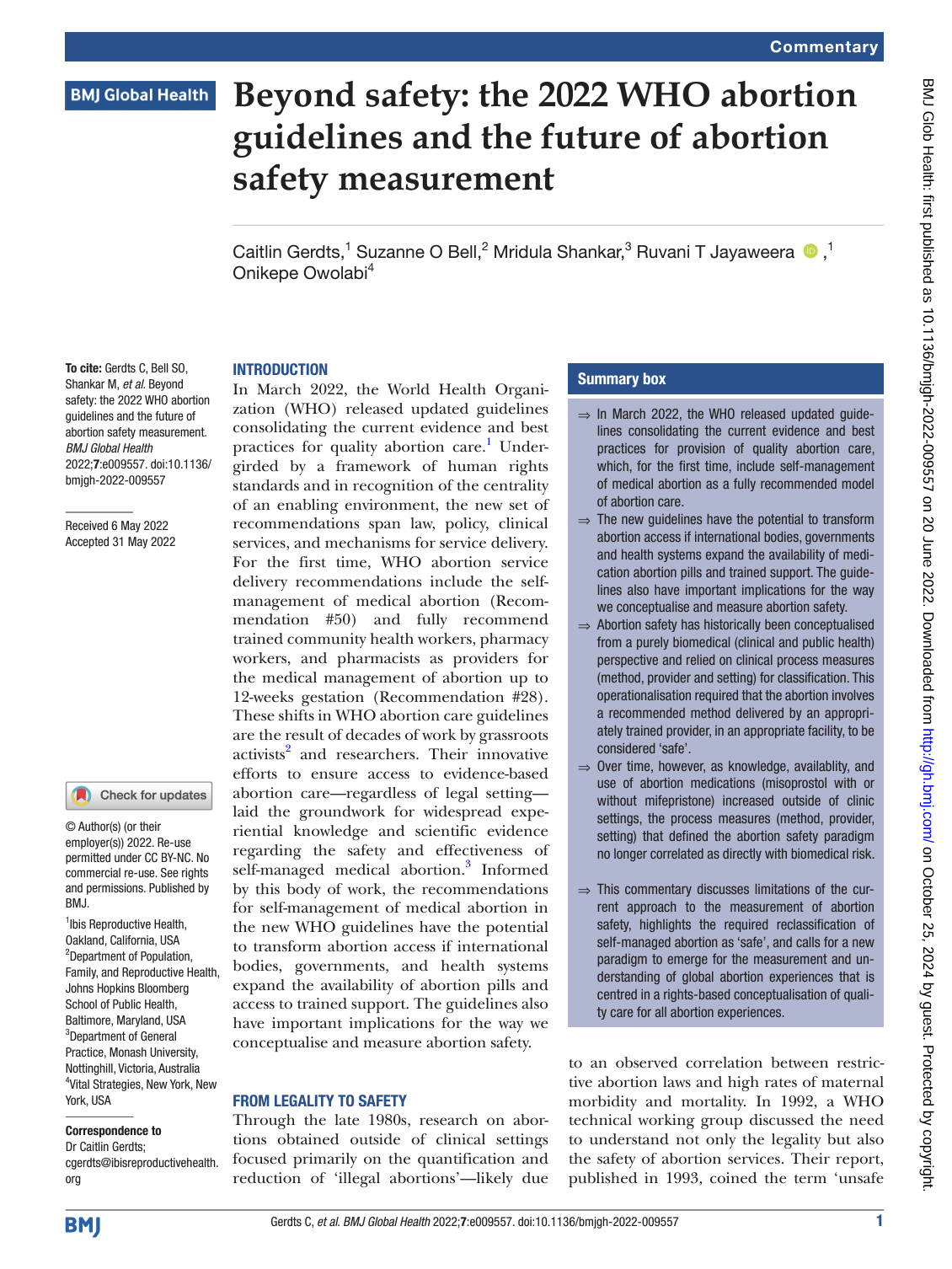Abortion safety has historically been conceptualized from a purely biomedical (clinical and public health) perspective and relied on clinical process measures (method, provider and setting) for classification. This operationalization required that the abortion involves a recommended method delivered by an appropriately trained provider, in an appropriate facility, to be considered “safe.” However, the updated 2022 WHO abortion guidelines consolidated the current evidence and best practices for provision of quality abortion care, which, for the first time, include self-management of medication abortion as a fully recommended model of abortion care. This article discussed limitations of the usual approach to the measurement of abortion safety, highlighted the required reclassification of self-managed abortion as “safe,” and called for a new paradigm to emerge for the measurement and understanding of global abortion experiences that is centered in a rights-based conceptualization of quality care for all abortion experiences.
Recent Abstracts
Effects of Heat on Early Childhood Development
Blood Lead Surveillance of Children and Pregnant Women in Tamil Nadu, India
Sportswashing through Media: Coca-Cola’s Olympic Play – A Research Report
What’s in Our Food?
Mais Dados Mais Saúde
More Data, Better Health – Primary Health Care
Mais Dados Mais Saúde: Experiência De Discriminação Cotidiana Pela População Brasileira
More Data, Better Health – Experience of everyday Discrimination by the Brazilian population
Monitoramento de Estratégias pelo Fim da Violência contra Crianças e Adolescentes
Harm Reduction: The Neglected Pillar of US Drug Policy
